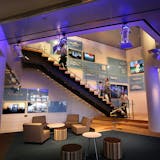The Twin Cities really has no chance of landing Amazon.com Inc.'s second headquarters — if you listen to everyone who doesn't live here.
On Tuesday, the Wall Street Journal became the latest media handicapper of Amazon's headquarters hunt to dismiss the Minneapolis-St. Paul area, calling it a "long shot" in a story and illustration on its homepage.
The Journal ranked cities by using Amazon's stated criteria for its new corporate center, expected to some day be the home of tens of thousands of employees, as well as interviews with site-selection experts and people the Journal said were "familiar with Amazon's thinking." The Journal ranked the cities based on six factors the company described in its request for proposals and gave the six factors equal weight in creating its scores.
In that method, Dallas, Boston and Washington, D.C., fared the best. The Journal also put Amazon's home city, Seattle, on the scale and then determined that Atlanta, Chicago and Denver were most similar to Seattle.
Of the 12 cities, including Seattle, that the Journal compared, Minneapolis was next to last with only Newark faring worse.
Minneapolis-St. Paul scored best in "fiscal health" but poorly on college population, despite the presence of the 51,000-student University of Minnesota campus. It was in the middle of the pack on the four other attributes Amazon was looking for: cost of living, tech labor force, culture fit and state tax rank.
The Twin Cities has fared relatively poorly in media assessments almost from the moment in early September when Amazon publicly announced it was looking for a place to locate a second headquarters.
Just a few days after that announcement, the New York Times published a blog post ranking prospects for the Amazon office and knocked out Minneapolis-St. Paul immediately as an area where job growth was not strong. Though the Twin Cities might have fared better in other considerations in the Times infographic, it wasn't considered because it had been knocked out on job growth.



